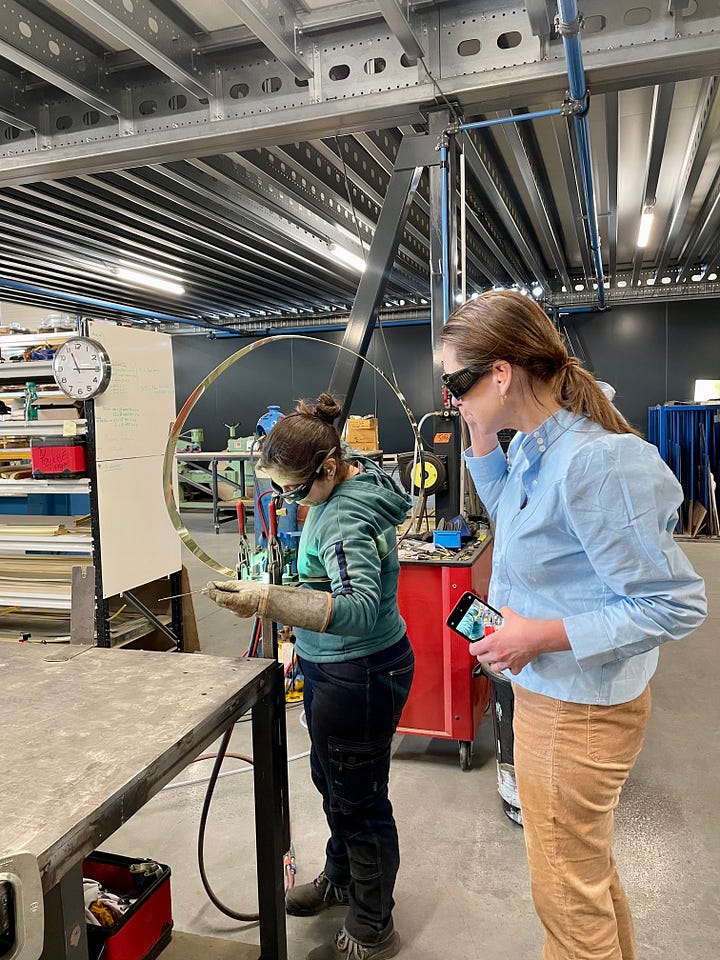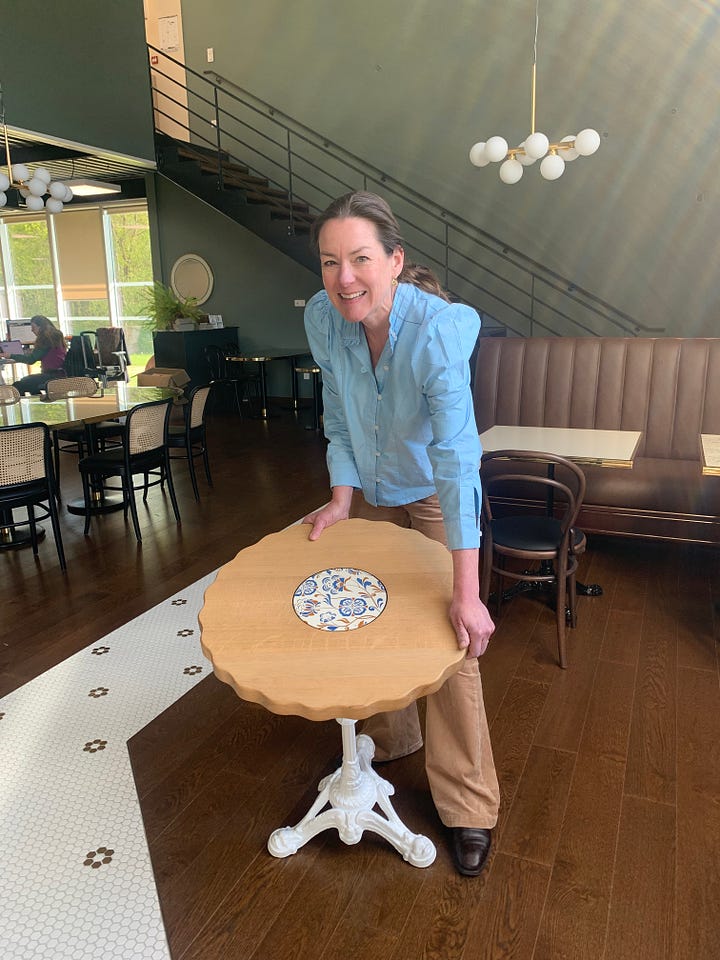Always is the short answer, but I’ll do you better than that, especially when it comes to this particular type:
You’re looking at a bistro table, of course, that iconic (s)eating space for 1, 2 or 3 that you find in restaurants, cafés, and terraces all over France, and indeed beyond. Its rise came along with the arrival of bistros themselves in the 19th century, when smaller tables replaced the long communal tables hitherto favoured by taverns and inns. The glory days of the bistro table were during the glamorous art-deco period. But, of course, they’ve never gone out of style, as a stroll down any street in Paris will immediately remind you.
But, so what? What’s so special about bistro tables, apart from their being ubiquitous?
For a start, these are surely the hardest working tables on the planet, on their feet and under people’s elbows from the earliest hours of the morning until well into the night, offering up milky coffees and croissants one minute, salads, steak frites, and carafes of wine the next; later on, espresso or perhaps a “Coca light;” later still, apéritifs; eventually dinner, and, after all that, nightcaps. The bistro table never rests; it exists to provide that privilege to us. Whenever we need it, there it is, acting as a punctuation mark at any moment of the day to give us a chance to pause before we re-enter the flow of life, restored in a feast of ways.
Something else that sets it apart is that it’s a table where a lone person can feel comfortable and among company. Take a seat on a terrace or inside, at any hour, all by yourself, and suddenly you’re fully connected to the world around you as you sit and watch it go by, completely welcome and entitled to your place in the pageant. Or don’t be alone, because if anything marks a meeting spot, it’s the bistro table. It’s a fixed point in this crazy spinning galaxy of all humanity where, when you tell a friend that’s where you’ll be, they’re sure to find you.
A bistro table is small, nimble, and designed to serve as many people as possible with a certain vitesse. Sure, you can linger for hours on a terrace if you want to, but a bistro table is really a spot to hop in and out of relatively quickly, perhaps for a croque monsieur or even just a revivifying splash of espresso or Champagne.
Above all, the bistro table is at the heart of life in France, practically synonymous with the city of Paris and an almost perfect symbol of the country’s motto: liberté, égalité, fraternité. It’s a symbol of liberty because it is the table where there’s always a place for you, often in the open air, one you can come upon spontaneously, without any invitation or plan to do so beforehand. It’s a symbol of equality because there’s nothing hierarchical about bistro tables; these are the tables of the people where everyone is welcome, no matter who you are, and even if all you’re going to order is a bottle of water. And it’s a symbol of fraternity because these are the tables where connection and intimate tête-à-têtes take place. This is where gossip is exchanged and where conversation and debate take place amongst fellow men and women. When you think about it, wouldn’t a bistro table make more sense as an emblem of France than an old coq?!
I’ll tell you one person who’d surely agree with me, and that’s Alexandre Gadessaud, founder of Ardamez, the Rolls-Royce of bistro table manufacturers whose ateliers are located in Brittany, just outside Nantes. (Yes, I had to go visit!) The word “ardamez” is Breton for “emblem,” so perhaps Gadessaud instinctively understood the table’s symbolic qualities when he named the business.
Just over a decade old, the company is not a heritage brand, but what it has done is revive classic bistro table-making techniques, notably enamelwork, which had fallen into disuse and been replaced by cheaper methods and materials. This is the feather in the Ardamez cap, and indeed the main inspiration behind the brand. Gadessaud had finished a Master’s degree in management but found himself itching to do something more tactile. He got his hands on some defunct enamelling machines and brought them back to life, initially making tables in his garage. Now he has a factory (and new machines) and produces deluxe tables for an international clientele, making various pedestal designs and using a variety of materials for the surfaces, from ceramic to oak to brass, and even crushed seashells.

Not all bistro tables are created equal, so next time you find yourself seated at one, give it a serious once-over. Is it solid and steady, perhaps with a cast-iron pedestal standing on lion paws, or does it wobble like a drunken dancer? Is the top relatively thick, handsome, unblemished, rimmed perhaps with polished brass or copper strapping, or is it flimsy and scratched? Is the surface enamel, or merely painted?
If you were Gadessaud himself, you’d even take note of how a table sounds. “It’s awful on the ears when you set a glass down on a cheap table,” he told me. Whereas it’s music to the ears the way a glass sounds when it lands on one of his own. Talk about paying attention to detail. Gadessaud bemoans the cheap copies of bistro tables coming out of Asia. “They flatten the foot on so many of them,” he explained, “and the tables completely lose their majesty.”
Majesty!
Now there’s a question I’m going to ask myself next time I’m in the market for a dining table: Does it have majesty? Certainly after my trip to the ateliers of Ardamez, I’ll never see a bistro table in the same way again, or, for that matter, any other table either.
Cheerio until next time,
Laura
P.S. I may not be opening a bistro or a café any time soon (ahem, or in this lifetime), but if I were, I’d have colourful Ardamez tables strewn all over the place. If any of you is now suddenly desperate to have one at home, head here.


P.P.S. This is not a sponsored post. It was written out of sheer enthusiasm for bistro tables, and also for the fact that a timeless French tradition of quality is being kept alive and thriving in the hands of a new generation.









Thank you for bringing to our attention the importance of the bistro table and to Ardamez, who are reviving the classic tables. It has given me a new appreciation for all tables, and for walking along the streets of Paris. Our last trip was in 1999. I now need to plan another trip.😊
Brings back wonderful memories.